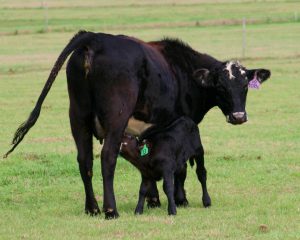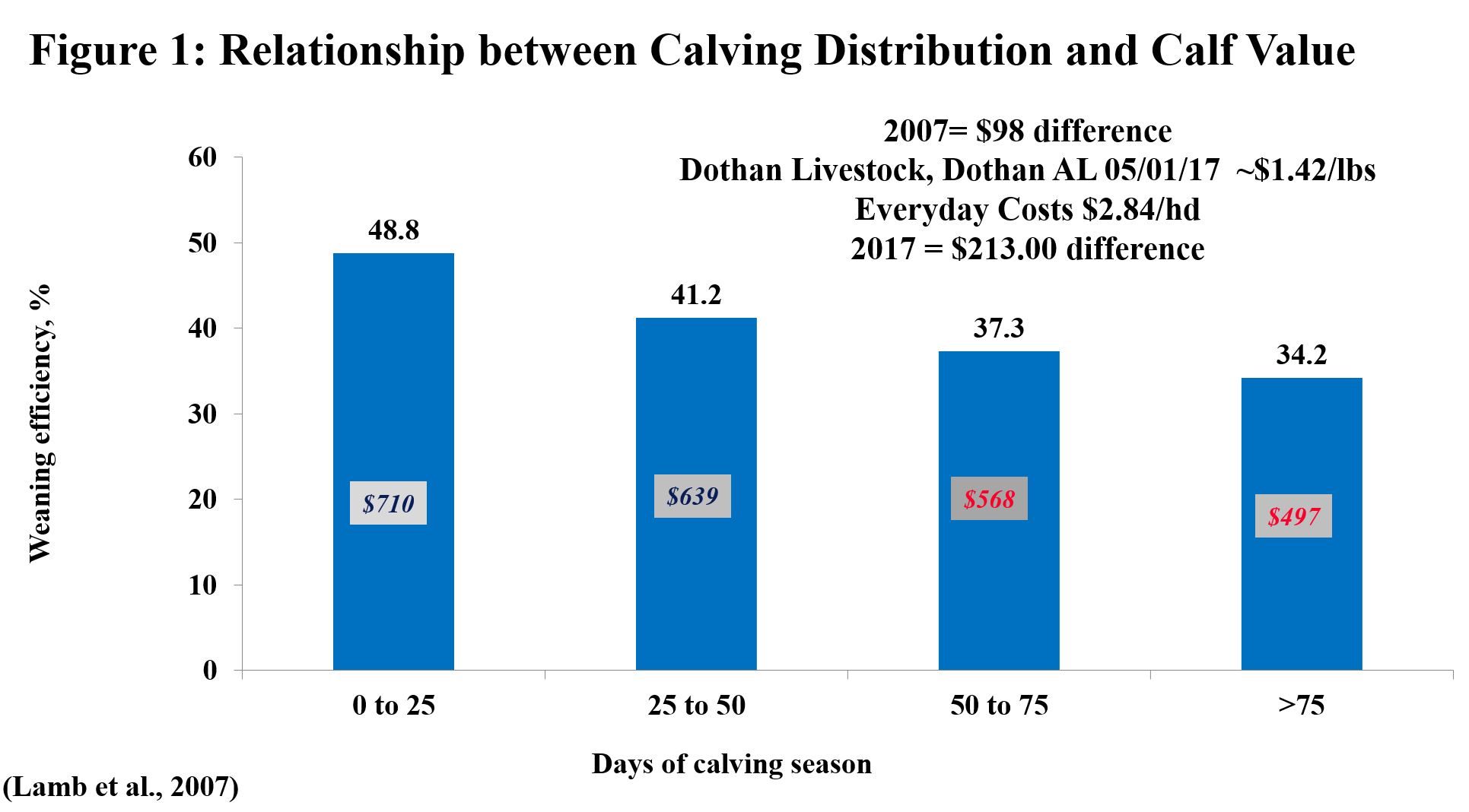The benefits of estrous synchronization to enhance artificial insemination (AI) are well established in the beef industry, however, in the United States, 94.2% of the cows are bred by natural service (bull breeding). Estrous synchronization can also be a useful tool for natural service to get more calves born early in the calving season. Understanding the benefits of using estrous synchronization, while still using bulls to breed within a herd, allows producers to capitalize on valuable technologies within the industry.
Through the use of estrous synchronization, producers can increase the number of females calving within the first 21 days of their calving season, without the use of AI. Data from the commercial cattle herd at the North Florida Research and Education Center in Marianna, FL (Lamb et al., 2007) shows that by focusing on the calving internal to increase (total number of calves born within the first 21 days of the breeding season) results in increase revenue (Figure 1). If cows calving in the first 25 days of the calving season are weaning a 500 pound calf, assuming calves are gaining between 1.5 and 2 lbs/day, cows calving at the end of the calving season are producing a calf that is $213.00 less (Figure 1). Through the use of natural service synchronization, producers can increase the number of calves born at the beginning of the calving season.
Implementing natural service synchronization starts with selecting a protocol to synchronize your cow herd. It is important to keep in mind that the protocols traditionally used for AI, are often adjusted to not synchronize cows as tightly, so that there is a more even distribution of cows coming into heat. This allows bulls to better service cows as they are coming into heat, however, the stocking rate of bulls must be taken into account when utilizing natural service synchronization.
Protocols Options
- 7 day – Progesterone based protocol: An Eazi-Breed CIDR®, or other approved progesterone source, exposes cows to progesterone through a 7-day protocol. Producers would insert a CIDR® for 7 days, remove the CIDR® without giving prostaglandin, as you would with a typical AI protocol, and turn the bulls in the same day as CIDR® removal.
- This protocol would be recommended for cows who may not all be cycling at the beginning of the synchronization program, research has shown that exposure to progesterone can help “jump start” estrus in cows. Keep in mind that you should not be inserting CIDRs® into any cows that are not at least 40 days post-partum.
- 1 Shot- Prostaglandin based protocol – Giving one shot of prostaglandin on the day that bulls are turned in will cause cows that are currently cycling, from day 6 to 19 of their estrous cycle, to come into heat over about a 24 to 96 hour window.
In conclusion, a natural service synchronization is a tool that is easy to implement at any level of management, in any cattle operation. Whether producers are trying to shorten their calving season or simply wanting to increase the total number of calves born within the first 21 days of the calving season, natural service synchronization is a small investment of time and resources for the future returns that will be seen by the operation.
- Horn Fly Control In Cattle - June 20, 2025
- Tips for Introducing New Chickens into Your Coop - April 25, 2025
- Tips for a Great Chicken Coop - April 11, 2025


